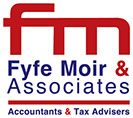There have been a number of changes to the tax rules applying to residential property in recent years.
The first significant “attack” on residential landlord’s in recent times was the restriction on tax relief for those Landlord’s who had borrowings relating to their residential property business. This affects only individuals and partners, not limited liability companies.
The change was first introduced in the tax year 2017/18 and what was introduced was a tax reducer, whereby a percentage of the loan interest paid was restricted to basic rate tax relief.
The following were the Transition percentages:
| Tax deduction | Tax reducer | |
| 2016/17 | 100% | 0% |
| 2017/18 | 75% | 25% |
| 2018/19 | 50% | 50% |
| 2019/20 | 25% | 75% |
| 2020/21 | 0% | 100% |
As can be seen from this table, from 6 April 2020, at best tax relief on interest paid for the acquisition and/or renovation of a residential property, will be restricted to the basic rate of UK tax.
We stated earlier that this was at best. This is how the tax reduction operates:
The reduction is the income tax basic rate value of the lower of:
Finance costs- costs not deducted from the rental income in the fiscal year plus any finance costs brought forward;
Property business profits – the profits of the property business in the fiscal year (after deducting any brought forward losses);
Adjusted total income – the income (after losses and reliefs and excluding savings and dividends income) that exceeds your personal income tax allowance.
The tax reduction is not allowed to be used to create a tax repayment.
If the basic rate tax reduction is calculated using the “property business profits” or “adjusted total income” then the difference between that figure and “finance costs” is allowed to be carried forward to calculate the basic rate tax reduction in the following tax years.
It can therefore become a little technical when calculating the actual relief available. However, if from 6 April 2020 residential landlords’ have as their default position of understanding that they will only receive basic rate tax relief on their property business loans, then they cannot go far wrong.
- It is important to reiterate that the loan interest, even at the basic rate, will only be allowed for qualifying loan purposes. By way of example, borrowing against a buy to let property for the purpose of purchasing a conservatory on their own home will not attract any tax relief at all.
The second significant “attack” on residential landlords’ is the payment of Capital Gains Tax (CGT) on gains made on the disposal of Domestic property other than on a principal private residence (PPR). The change from 6 April 2020 is that most people who sell a house or flat on which CGT is due, will have to “pay and file” within 30 Days of completion.
As well as Landlords’ these new measures will apply to individuals who have been absent from their PPR, working abroad or elsewhere in the UK. Divorce or separation must also be taken into account.
They will have to pay the CGT on the disposal of the house or flat within 30 days from the sale completion date;
At the same time, they will have to submit a new CGT return, giving full details of the disposal and the CGT payable from the gain.
This will relate to Capital Gains on for example:
Rented domestic properties
Second homes
Overseas houses and flats
Disposal of own homes where full CGT PPR is not due.
Make no mistake this is a massive administrative problem and only time will tell if HMRC will have a light touch on this issue or if they will heavily penalise those who get it wrong from the get go.
It is therefore vital that clients liaise with their accountants promptly if they are going to avoid the inevitable pitfalls.
Payment of the CGT will be due within 30 days of the completion of the disposal. This will be by pay and file. A new special detailed payment on account return, giving details of the disposal, capital gain and the CGT payable will also need to be sent to HMRC at the same time as the payment of CGT. So, if you have three such disposals in the tax year then you have three returns to make.
This is going to severely stretch the cash flow of Landlords’. By way of example; If a disposal was made on 1 June 2020 and produced a capital gains tax liability, then the return for that gain and the tax must be in HMRC’s hands by 1 July 2020. Under the current CGT rules, that tax would not have been payable until 31 January 2022. Therefore, using the tax money for your next property deposit is no longer an option!
So, where next? Unlike “White van man”, Property landlords’ have little or no political pressure they can bring to bear. It would not be at all surprising if all tax relief on the purchase of residential property to let, is removed in the future.
Disclaimer
This blog is to inform and try to assist Landlords’. It cannot be relied upon by individuals and if you have issues in this area then we advise you to contact us for specific advice.
